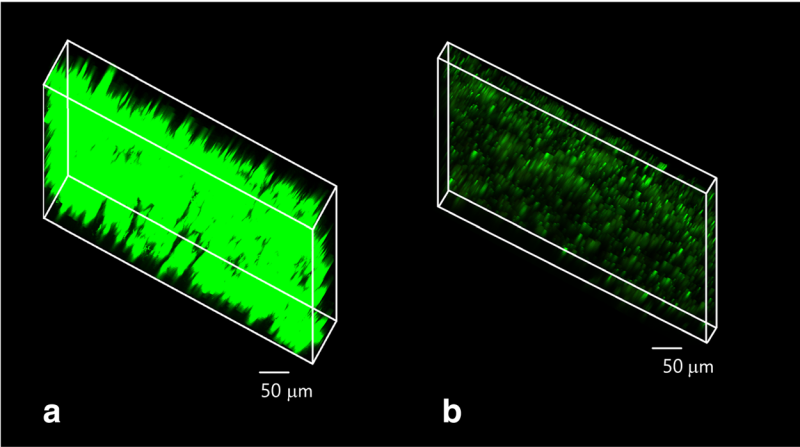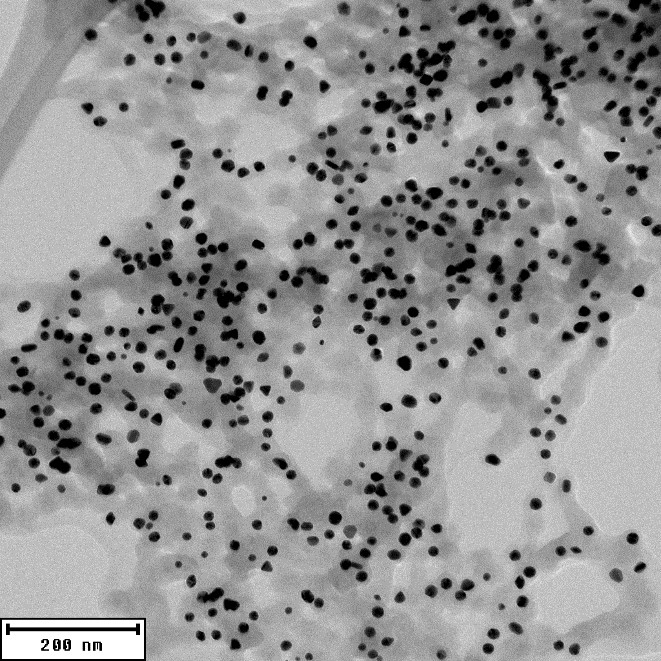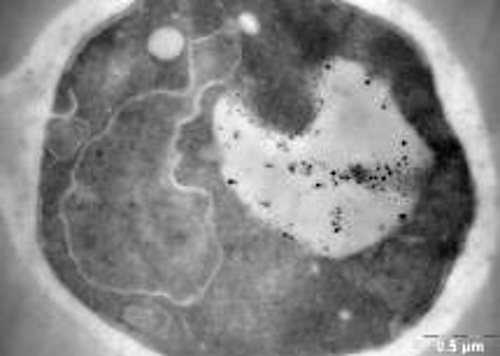Biofilms
Researchers: Jan Masák, Prof., PhD, Alena Čejková, Prof., PhD, Olga Maťátková, Assoc. Prof., PhD, Irena Kolouchová, Assoc. Prof., PhD, Eva Vaňková, PhD
Biofilms can be defined as structured communities of microorganisms colonizing solid abiotic surfaces, tissues, or phase interfaces, surrounded by matrix (EPS, extracellular polymeric substances) and exhibiting various distinct cell phenotypes. It is one of the most common forms of life for microorganisms. The presence of microorganisms in biofilms is the result of purposeful behaviour regulated at the level of intercellular communication based on the production and perception of signalling molecules. Microorganisms living in a biofilm have a different phenotype when compared to planktonic populations. This phenotype is characterized by increased resistance to toxic substances and generally towards the external environment, high production of extracellular polymeric compounds and significantly altered protein profiles. There is also a change in catabolism and anabolism. The biofilm formation ability is also a manifestation of virulence of the pathogenic microorganisms. Based on these principles, we explore the following topics:
- Biofilm preparation methodologies on different carriers and in different environmental conditions. Observing the properties of mature biofilms – metabolic activity, total biofilm biomass, EPS production, biofilm structure etc.
- Study of the anti-biofilm activity of natural substances that interfere with the regulation of biofilm formation (interference with microbial signalling molecules) or affect the stability of biofilm matrix (biologically active substances: rhamnolipids, etc.). Utilization of this knowledge to suppress microbial colonization of instruments or implants used in medicine.
- Study of virulence factor production in both planktonic and biofilm forming populations, searching for new methods of inhibition of virulence factor production.
- Study of the relationships between the presence and concentration of specific signalling molecules (especially acyl-homoserine lactones) and formation of bacterial biofilms and their stability.
- Study of metabolic pathways and increased resistance of biofilm populations enabling efficient decomposition of toxic substances in the environment.

3D representation of Trichosporon cutaneum biofilm created using confocal microscopy: control (a), 160 mg/L of resveratrol (b).
Interaction of Nanoparticles and Microorganisms
Researchers: Jan Masák, Prof., PhD, Alena Čejková, Prof., PhD, Olga Maťátková, Assoc. Prof., PhD
Due to their size, nanoparticles have physicochemical properties that differ from their respective macroscopic analogues. Particle sizes ranging from 1 to 100 nm enable a relatively easy penetration across cell membranes into the cytosol, where particles can further interact with cellular components. A high value of their specific surface area facilitates their interaction with the cell surface. A big advantage of nanoparticles lies in their complex mechanisms of action. It is clear that nanoparticles interfere with multiple cellular processes simultaneously; therefore, the probability of development of microorganisms resistant to the effects of nanoparticles is very limited. For biological applications, considerable attention is given to nanoparticles of metals and their oxides.
In the context of the comprehensive knowledge of biological effects of nanoparticles Fe0, Au0, Ag0 (and others) on single-celled organisms (prokaryotes and eukaryotes), we study the following topics:
- Impact of nanoparticles on populations of single cell microorganisms monitored at the level of growth characteristics and reproductive activity.
- Study of changes in cell morphology and cytology in connection with the toxicity of nanoparticles.
- Investigation of oxidative stress induced by some nanoparticles, including lipid peroxidation, protein carbonylation, and the accumulation of reactive oxygen species activity of enzymes that protect cells from oxygen radicals.
- Ability to protect cells from the toxic effects of nanoparticles by applying natural substances.

Ag nanoparticles formed via biosynthesis using extract from Vitis vinifera agriculture waste.
Microbial lipid production
Researchers: Irena Kolouchová, Assoc. Prof., PhD, Olga Maťátková, Assoc. Prof., PhD, in collaboration with Institute of Microbiology of the CAS, v. v. i.
Microorganisms produce lipids as storage compounds with triacylglycerols (TAGs) as their main constituents. Information about the exact composition of TAG mixtures is crucial for understanding their biosyntheses and their overproduction. The full characterization of the TAG fraction for an oil/fat requires the separation of all individual TAGs followed by the quantitation of separated species.
Many species of algae and cyanobacteria have the ability to produce substantial amounts (e.g., 20-50% of dry cell weight) of triacylglycerols as storage lipids. Cold- and hot-adapted microorganisms also have considerable potential in biotechnological applications because they accumulate large quantities of lipids and are able to regulate efficiently their lipid composition and adjust membrane fluidity.
Oleaginous bacteria that produce microbial oils in high quantities are able to accumulate TAGs under nitrogen starvation and are able to be cultivated on unusual carbon sources. Lipid hormones (lipokines) are fatty acids with many positive effects on human health. An important lipokine is palmitoleic acid (9-16:), which contributes to reduced inflammation, protection of the cardiovascular system, and inhibition of oncogenesis. Yeasts are attractive sources of palmitoleic and other beneficial fatty acids that are found in yeast cells either as polar lipids, i.e., phospholipids or glycolipids; or as neutral lipids, such as triacylglycerols.
- Possibilities of microbial lipid production by yeasts, bacteria and algae
- Potential production of essential fatty acids by microorganisms
- Production of specific fatty acids for the pharmaceutical and cosmetics industries
- Biodiesel production using yeast
- Study of lipids from extremophile microorganisms

Vitis vinifera
doc. Ing. Irena Kolouchová, PhD., doc. Ing. Olga Maťátková, PhD., prof. Ing. Alena Čejková, CSc., spolupráce: EPS biotechnology s.r.o., Vinné sklepy Kutná Hora s.r.o., Vinselekt Michlovský a.s., Nové Vinařství a.s.
The grapevine (Vitis vinifera) is a important cultural crop, which has been domesticated as one of the first fruit crops. It is used both for direct consumption, for the production of raisins and for processing in the wine industry. Grapevine is a rich source of antioxidants and polyphenolic substances.
The physiological state of grapevines is influenced by many factors, including climatic conditions (biotic and abiotic stress) in a given year and by the vineyard treatment. All these factors have an impact on health of the plant, which also affects the grapes yield and the content of antioxidants. The stress response mechanisms of the plant include the synthesis and transport of antioxidants and production of secondary metabolites that are synthesized not only by the vine but also by its endophytic microflora. The physiological state of vine is also influenced by the use of spraying in viticulture, nowadays with more frequent use of natural products for the protection of the plant and the environment.
Wine production technology is one of the traditional biotechnologies that have been used since ancient times. Biotechnological approaches and possibilities are now changing, both in the terms of new developments in the grape processing technology or filtration, but also in terms of new yeast strains with improved properties, used for the must fermentation.
Food manufacturers have an increasing interest in the benefits stemming from the presence of various nutritional compounds in their products. These include polyphenol antioxidants, such as resveratrol. Bioavailability is a limiting factor in the uptake of polyphenol compounds, which often originates in their limited solubility in water solutions. Interesting sources of polyphenol antioxidants include wine. The legislative requirements for wine production are such, that the increase in the content of nutritionally beneficial substances can only by done by the means of modification of the technology production.
- Development of new technologies of wine production with increased content of biologically active substances
- Development of technologies for production of low-alcohol and non-alcoholic wine drinks with biologically active substances and antioxidants
- Possibilities of using wine waste as a source of biologically active substances
- New ways of vine protection in organic agriculture
- New technologies of wine drinks production
- Changes in the endophytic microflora population during the growth of vine during the year and in the response to stress
- Biotechnologically interesting products of the endophytic fungi associated with grapevine
Spirits technology
doc. Ing. Irena Kolouchová, PhD., doc. Ing. Olga Maťátková, PhD.
The manufacture of fruit spirits belong to the traditional biotechnologies. Like wine making, fruit spirits have been produced since antiquity. At present, the view towards the traditional production is changing, in particular with regard to the use of pure yeast cultures for the fermentation. Correct fermentation technology and the subsequent distillation can significantly improve the quality of the resulting product, and even the production yield can be increased.
- Influence of fermentation and distillation technology on analytical and sensory quality of spirits
